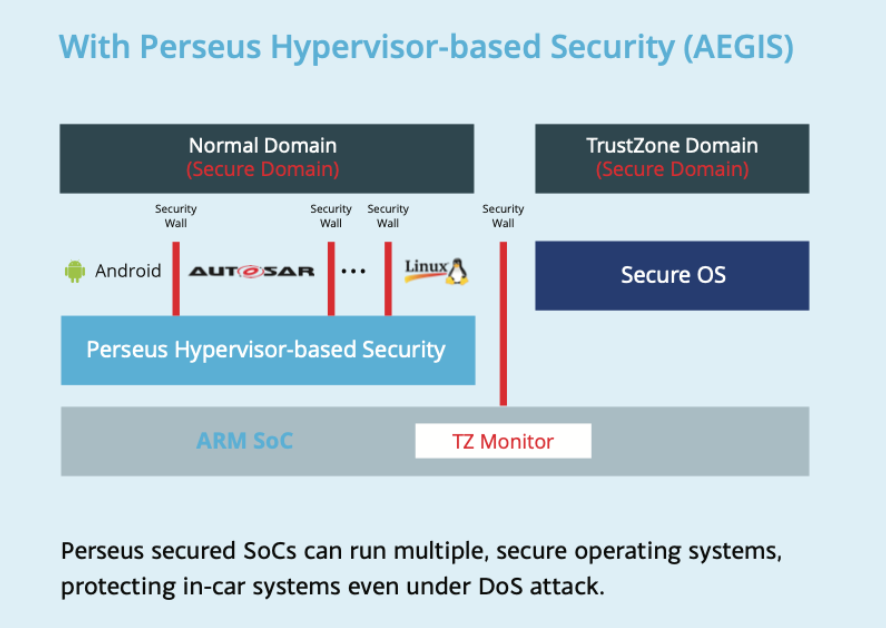Our Hypervisor-based security was initially demonstrated on a Samsung mobile device in 2008 and is the result of hypervisor research and development led by a pioneer of the technology, Perseus CEO Dr. Sang-bum Suh since 2007. It has huge potential to answer the increasing security concerns in the automotive industry as in-car systems become more complex and therefore more challenging to secure.
While the industry has been slow to innovate in the automotive security space, regulations are now pushing development forward at pace. The EU has already introduced e-call, setting a precedent for increased security-centric regulations for connected cars and in 2019, the U.S. Senate stated a commitment to introducing regulations on connected car security within 3-5 years. In other words, regulators are beginning to pressure the automotive industry to secure their vehicle fleets. Perseus is dedicated to supporting industry leaders to meet regulatory requirements today and into the future.
Currently, OEMs, T1s and T2s typically rely on system, application and device developers to secure their own solutions. However, system-wide security is the only way to guarantee safety and security of connected cars as connected services and therefore, in-vehicle systems, continue to expand and become more complex. Current security measures in connected car fleets are already showing strain, with a rapid increase in security breaches of connected car systems year on year. By 2023, it is expected that 50% of the global automobile fleet will be connected and therefore prone to malicious attack. Since 2016 automotive cybersecurity breaches have increased over 600% and they doubled in 2019.
How Perseus Hypervisor Security works
By setting parameters for CPU usage on a per application level, Aegis, the Hypervisor-based security developed by Perseus, delivers dynamic, real time security control. Security parameters can be pre-programed, controlled algorithmically or adjusted manually as threats emerge. Developed to operate with any SoC provider, Perseus’ hypervisor security technology enables real time, flexible, fine-grained security protection that eliminates threats as they occur, while guaranteeing peak performance of systems even under DoS attack.
As the number of third party apps that are utilised in cars increases, so does the security concern. Without rationalising the technology infrastructure that supports these apps, delivering full protection system-wide is near impossible.

This system carries Perseus Hypervisor-based security. Beyond rationalising system hardware and software requirements, each individual in-car application is fully protected at a level similar to the Turst Zone, built into every ARM SoC. This is critical because in the event that one system (for example the Android OS) is compromised, all others still remain safe.
Having completed successful PoCs with the likes of Renesas, our Hypervisor-based security is one of the only proven solutions that prevents connected cars from being hacked, while offering real time security control on a per application basis. Our solution is compatible with ARM security architecture as well as leading operating systems, like LINUX, QnX and Android. We do not require lock-in from device manufacturers, app developers, T1 & T2 suppliers or car OEMs, meaning that we can offer our customers flexibility to work with other solutions providers of their choice.
In Sum:
- Perseus Hypervisor Security delivers multiple, secure containers on a single SoC
- Per-solution data transfer parameters, for the purpose of fine tuning security protocols, can be pre-programed, algorithmically controlled or adjusted on the fly
- Real time, fine grained I/O rate control is possible
- Device isolation sandboxes threats as they occur, ensuring that entire systems are not compromised and that peak performance of systems is maintained, even under DoS attack
